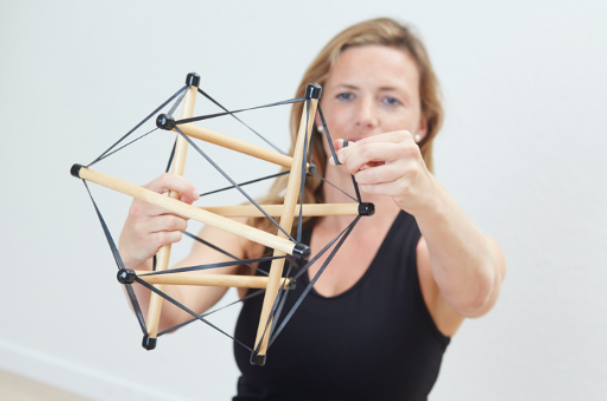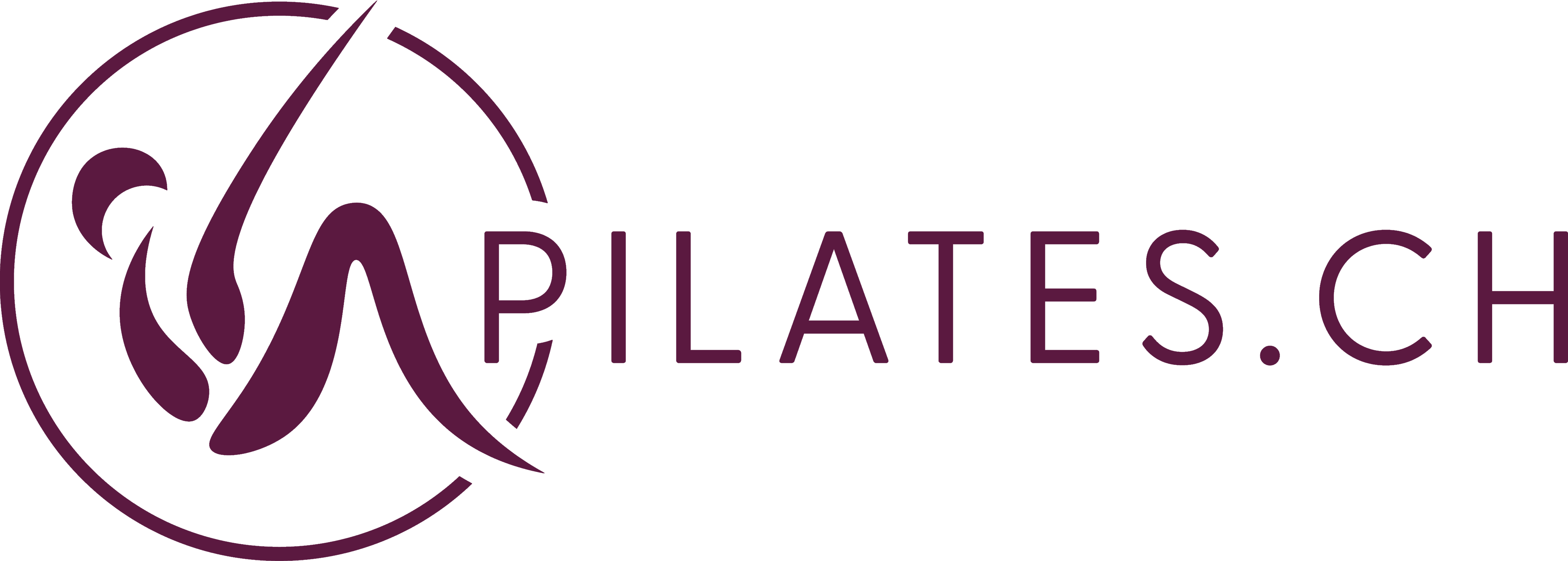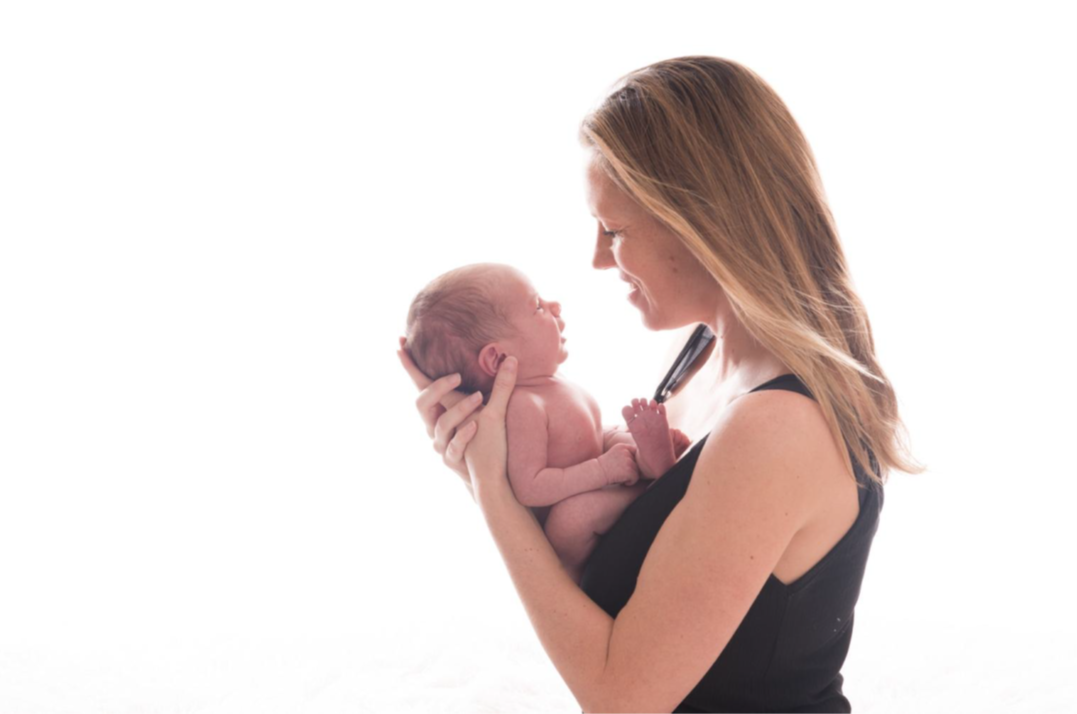Fascia in regression - a network in transition
Fasciae and their influence on movement, vitality and well-being have become the focus of much attention in recent years. They do an amazing job, especially in the post-pregnancy period. Bea Eggimann has been working on this topic for many years and provides valuable ideas on how fascia can be supported and trained during postnatal recovery.
Fascia - the hidden network
Fasciae are far more than just "connective tissue". They form a comprehensive communication network that runs through the entire body from head to toe. They give us elasticity, ensure mobility and influence our body perception.
An illustrative model for this is the so-called tensegrity model: bones act like rods that push outwards, fasciae like elastic ligaments that provide inward traction. This creates a dynamic balance. A change in one area has an effect on the whole body - a principle that is particularly noticeable during pregnancy.
Changes during pregnancy and birth
- The growing belly stretches the abdominal muscles, the fascia becomes thinner and the linea alba loses its elasticity. At the end of pregnancy, every woman develops a rectus diastasis.
- The back fasciae take on more work due to the shift in the body's center of gravity. This can lead to tension and shortening.
- The pelvic floor is put under a lot of strain regardless of whether it is a natural birth or a caesarean section.
- Hormones soften the tissue, an effect that lasts for up to six months after weaning.
All these changes show: The regression affects not only individual muscles, but the entire fascial network.
Myofascial training: step by step back to balance
After giving birth, it takes time and conscious movement to restore inner resilience. Bea
Eggimann emphasizes the importance of myofascial training that specifically addresses the needs of postnatal recovery:
- Functionally support rectus diastasis: The focus is not on the width, but on the tension and functionality of the abdominal wall.
- Keep back fasciae supple: Hydration and gentle movements restore length and loosen adhesions.
- Integrate the pelvic floor into the overall system: It is connected to the abdomen and back via fasciae and should be trained actively and dynamically.
- Breathing and posture: A freely swinging diaphragm and an upright core are the basis for stability.
- Consider scar tissue: Whether it's a caesarean section or birth injuries, scars can also be positively influenced if they are included in the exercise.
This training is always gradual. It takes into account the special situation of mothers in everyday life, in which lack of sleep, breastfeeding and emotional changes represent additional stresses.
More than just bodywork
Fasciae are rich in receptors and are strongly connected to the nervous system. This is why myofascial training not only works physically, but also emotionally and energetically. It can help to build up resources, reduce stress and regain a sense of inner stability.
Regression is therefore not only a process of physical regeneration, but also an opportunity to deepen your own body awareness and develop confidence in your new body.

Conclusion
Fasciae are a crucial part of the recovery process. They connect muscles, organs and structures with each other and react to every change in the body. Targeted myofascial training can strengthen elasticity, mobility and well-being, for more ease in everyday mommy life and a stable basis for the future.
Bea Eggimann makes it clear that regression does not mean returning to the "old body", but consciously building up the new body center and nourishing the fascial network for vitality on a physical, emotional and mental level.
Regression - Consciously arrive and connect
Postnatal recovery is much more than just restoring your physical shape after giving birth - it is an invitation to reconnect with your body. Through mindful, myofascial training, you can release tension, build strength and regain confidence in your inner center.
Fascia work helps you to feel stability and freedom of movement at the same time. It not only promotes your physical balance, but also your emotional well-being. With every conscious movement, you strengthen the connection between your body, mind and soul - and therefore your relationship with yourself.
Treat yourself to this precious time for yourself: Islands of peace, self-awareness and inner peace. Step by step, you can regenerate, center yourself and start your everyday life as a mom with new energy - powerful, calm and anchored in yourself.
This approach and training philosophy is based on the latest findings from movement science and myofascial research. In particular, the work of Karin Gurtner (art of motion, FAMO Fascia Movement), Muriel Morwitzer (art of motion), Sarah Duvall (Core Exercise Solutions) and Diane Lee provides valuable impulses on how resource-oriented, functional training after birth can sustainably strengthen the body and mind.
References & Inspirators:
- FAMO Fascia Movement, art of motion - Karin Gurtner
- Muriel Morwitzer, art of motion
- Sarah Duvall - Core Exercise Solutions
- Diane Lee - Books & Training
- Pilates Bern
*The original text comes from Bea Eggimann - edited and supplemented for PILATES.CH. (2025)


